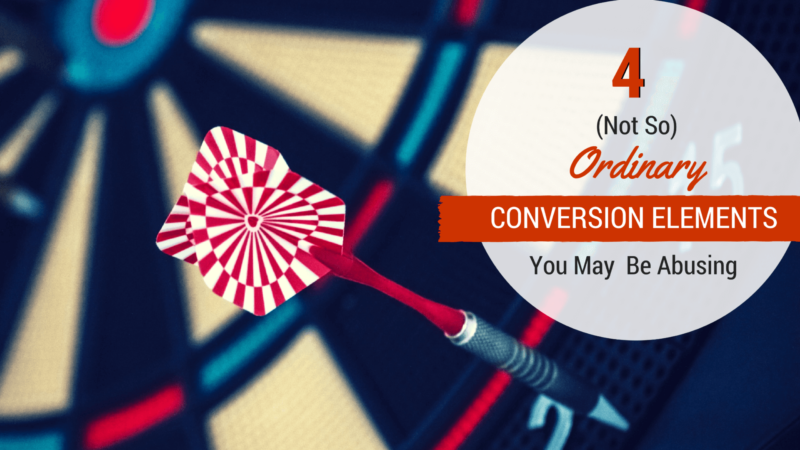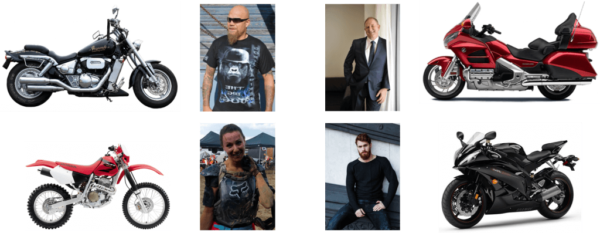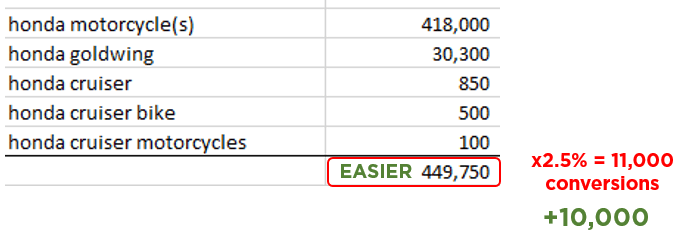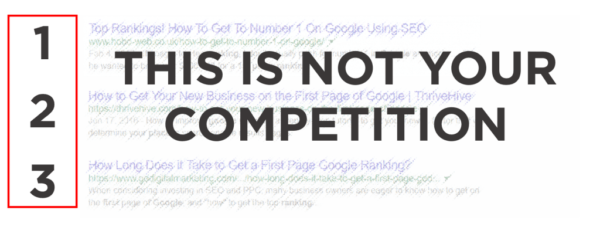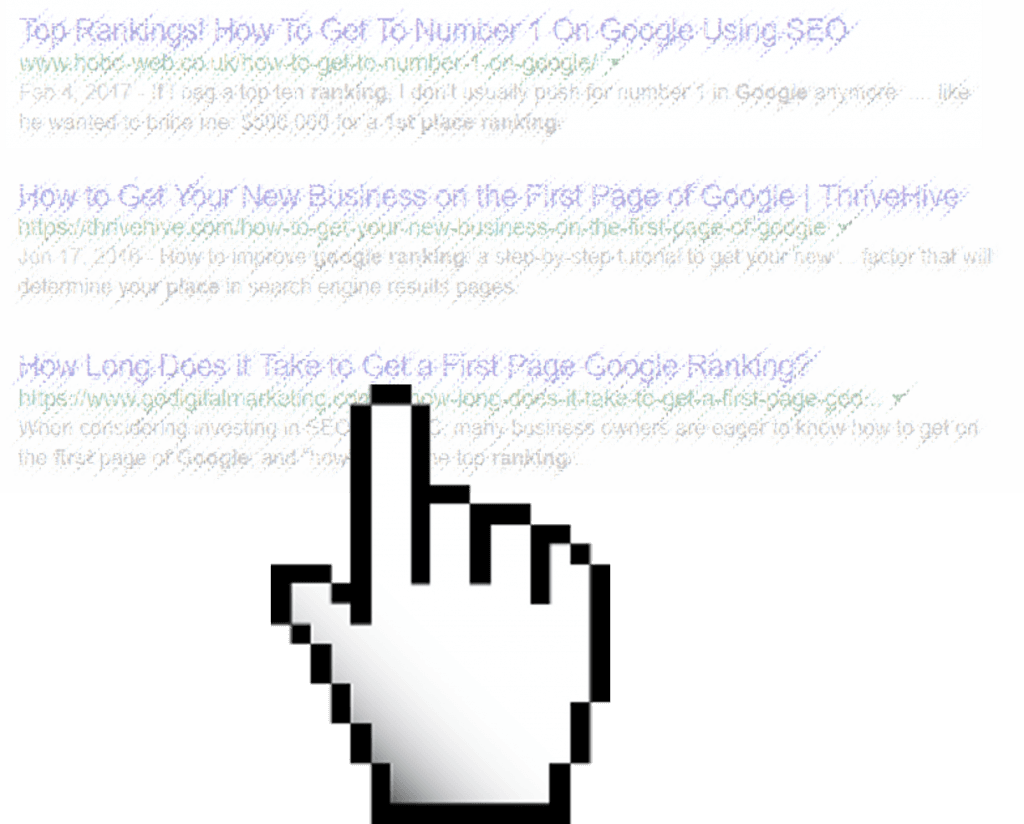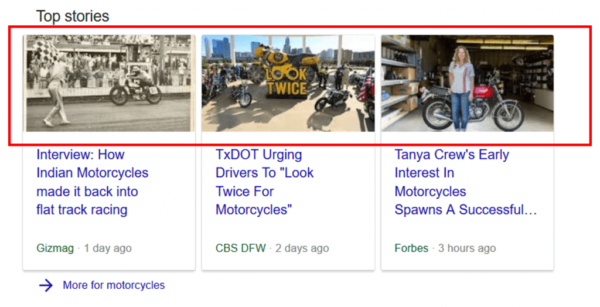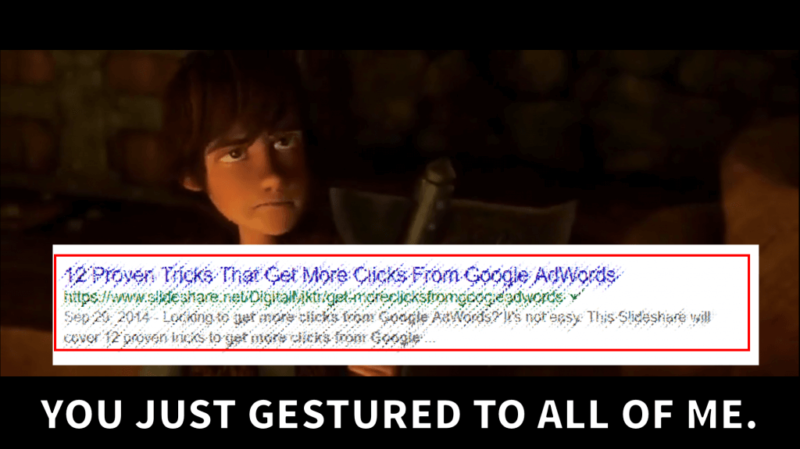4 (not so) ordinary conversion elements you may be abusing
Contributor Stoney DeGeyter argues that you should optimize with an eye toward conversions and let the rankings take care of themselves.
The website conversion process starts with driving traffic to your site, but not just any traffic — it needs to be targeted traffic. That’s a small, but crucial, detail.
What’s the danger of “untargeted” traffic? Well, for one, it’s a huge waste of time and resources. And two, if the search engines are paying attention (and they are), the untargeted traffic leaving your site can have an impact on your search engine rankings.
Untargeted traffic is lose-lose.
But let’s get back to the good kind of traffic. No matter what form of online marketing you are engaged with, all of them should have a primary goal to drive targeted traffic to your site.
And there are a lot of ways to do that.
SEO immediately comes to mind, but that may or may not be a driving factor in generating traffic to your business. You can make a lot of headway with brand engagement by developing content that satisfies what people are looking for, and then optimizing and sharing that content online.
All of these things will bring in traffic, but that’s where we have to go back again to make sure that the traffic we are getting is targeted. As I said in my opening paragraph, the conversion process doesn’t start when someone lands ON our site. It starts with your very first interaction with them. That could be a search engine result, a social post, a piece of shared content or a combo of them all.
But in this post, I’m going to focus specifically on search.
We often optimize websites hoping to turn the visitor into a customer. But in doing so, we forget that we have to start with the searcher.
It starts with targeted keywords
Keyword research is nothing new to the process of search engine optimization. In fact, keyword research is where SEO all started. But many don’t realize that conversion optimization starts with keyword research, too. This is how we understand what searchers want and what (key)words resonate with their interests.
There are two types of keywords: Targeted and Untargeted.
There’s that word again: Targeted.
If you want targeted traffic, you have to find and optimize for targeted keywords. Choose the right keywords, and you’ll bring in the right audience. Choose the wrong keywords, and you’re just consuming bandwidth.
OK, let’s do a thought experiment. I’m going to throw out a word, and I want you to close your eyes and picture an image in your head.
Ready?
Before you go any farther, make sure you have a picture of a motorcycle in your head. If you don’t, get one quick. No cheating!
…
…
…
…
…
…
…
…
Did the image in your head look like any one of these?
I’m willing to bet it did. And if you ask the person reading over your shoulder right now (made you look!), they likely imagined a different motorcycle than you did.
The thing is, these are all motorcycles, but all are represented by different keywords:
And each of these keywords has a completely different visitor in mind:
And this is important because the term “motorcycle” isn’t really all that targeted. We know exactly what the word “motorcycle” means, but it’s not focused on the visitor.
Many argue that untargeted traffic does bring in sales. That’s true. But as I said above, untargeted keyword phrases are much harder to rank for than targeted phrases. And the conversion rates are far lower.
Let’s break this down into a bit of an exercise.
Let’s say that the terms “motorcycle” and “motorcycles” get a million searches per day. That sounds like a lot. But assuming that you were able to get a 100 percent click-through rate (a big assumption), what would the conversion rate on that be? Probably somewhere in the .1 percent range.
So that’s a thousand conversions per day. Sounds great, right? But let’s remember that the time, energy and effort to get that traffic is pretty substantial. You’ll be paying for that for a long time to come.
But what if we narrowed our keywords a bit? We find keywords with a lot less search volume, but we get a bigger conversion rate for them.
Not only does it take a lot less investment to rank for these “lesser” keywords, but the higher conversion rate gets us a net increase of 10K daily conversions. Holy smokes!
See what a difference targeted keywords can make?
But remember, we made a huge assumption that you’d get a 100 percent click-through rate. We know that’s not gonna happen, but there are things you can do to entice visitors to click on your site rather than a competitor’s.
Entice the click
The first rule of competing for rankings is don’t compete for rankings. Search engines are not your competition, nor are the ranking positions.
I like to think of search engine positions as the trophy for a job well done. It’s not a race to the trophy, it’s a race to the finish line to earn the trophy. And that’s a huge difference. The trophy comes after the competition.
So if you’re not competing for rankings, what are you competing for?
Clicks!
Which brings us to our (not so) ordinary conversion elements
Now, typically, when we think of ways to get conversions, we’re thinking about on-page conversion flow and usability issues. Those are the ordinary elements. All are hugely important, mind you, but we are talking about a couple of ordinary things that are not so ordinary when it comes to generating site conversions.
And that’s because these are things we use every day as part of optimization, but we often neglect them as part of our conversion process.
But remember, we’re trying to entice the click. Ready to have your mind blown? Here they are:
1. Title tags (clickable text) get ATTENTION
In order to entice a click, you have to get the searcher’s attention. Or if you’re dealing with any other media such as social, this would be the status update.
That title has to make the seeker sit up and take notice. It has to stand out. It has to give the searcher precisely what they are looking for while also offering something of unique value.
Do a quick search for your keywords and scan the title tags that come up in the search results. You’re not doing this so you can mimic, but so you can see what’s missing. If you can offer something that the other links are not, you’ve got yourself an attention-getting title tag. Which, in this case, is a good thing.
2. URLs (destination page) provide CONFIRMATION
The URL is a great way to provide visual confirmation to the searcher that they’ll land on a page highly relevant to their interest. This means that you can’t settle for long, complicated or jumbled URLs. They must be succinct, to the point and provide a very clear indication as to the page’s content.
Where a title tag and meta description are often optimized, that optimization doesn’t always represent the truth of the page. Rather, it represents the truth of what the optimizer is trying to achieve — which is to bring in more traffic.
URLs, on the other hand, have a way of being a bit more honest. You’ve only got a few words before the URL gets overly cumbersome, so it has to be tight. As far as the construct of the URL, you’ve got the site name, the page category, and the page file name. All of those provide a very strong indicator of what the actual content of the page will be.
3. Images (where applicable) create INTEREST
You’ve got their attention and have given a confirmation that your page is going to satisfy their search. That’s all there is to it, right?
Well, no. Because you’re not the only one competing for the click. And that’s where images come in. That image is what is going to help you stand out just a bit more than someone else.
Use images that intrigue. They should provide enough information without completely satisfying the curiosity.
Take a look at the three images in the search result above. The one on the left does the best job of capturing my attention. The other two don’t really do much for me. So which would I be more likely to click on? If the image was the deciding factor, I’d click on the far left. However, if the title had already captured my attention, it wouldn’t even be a competition.
You don’t always get an image in your search results, but when the option presents itself, make sure you take advantage of it.
4. Descriptions (surrounding text) generate ACTION
No conversion process would be complete without a call to action. People have to be told what to do. Even if the thing they want is staring them right in the face, many people are like deer in the headlights and wind up taking no action at all.
The call to action is how you tell the deer to get off the road into safety. But in this case, you’re telling the searcher to get off Google and onto your site.
And I’m not just talking about saying “click here.” You need to use your description to write a compelling reason to click. What are the benefits the searcher will get when they click? What problems will be solved? What value will be gained?
The description is your last chance to get the visitor to take action. Yes, you do have to spell it out for them.
Search engine rankings aren’t just for show
Perhaps you noticed that I just gestured to the entire search result as a very important conversion optimization tool. Search engine rankings aren’t just for show. And, now that I think about it, they aren’t just the trophy.
Yes, the rankings are still a reward for a job well done, but they are also an opportunity for extra points. Think of it as overtime. You got your trophy, but you still have a chance to rack up more points, more value and more conversions for your business.
So, the next time you start optimizing your tags for rankings, stop. Do other important things to earn your rankings. These tags are far too important to be wasted on such things. This is where the conversion process truly begins.
Opinions expressed in this article are those of the guest author and not necessarily Search Engine Land. Staff authors are listed here.
Related stories
